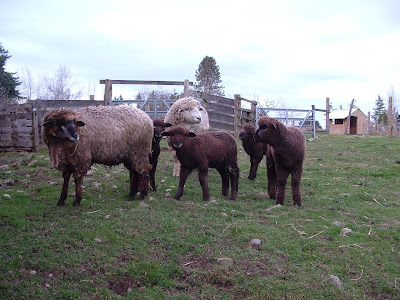
My cousins, brothers and I all learned to drive on a tractor very similar to this one. Growing up on a ranch in Eastern Oregon meant we were all driving machines like this before we were in our teens. I remember being no more than five years old and the golden feeling of sitting on my grandfather's lap while he drove the tractor around the hay field.

This is my brother and his new toy. With our shared childhood memories, I know exactly why this old tractor puts a happy smile on his face -and I'm hoping he'll let me sit in its seat next time I visit him! I recently made Butterscotch Cream Pie (twice) and it reminded me of him as a kid. This pie was one of the things I would bake for my brothers where we were teens and it was one of his favorites.

Prebake a basic pie crust (click here). When I chill the dough for several hours before rolling it out, it always seems to result in a more tender crust, but my mom never does this step and her pies are always awesome!

Butterscotch Cream Pie Mix in top of double boiler: 1/4 c. brown sugar 1/3 c. flour 1/2 t. salt Gradually add 1/2 c. milk and stir to make a smooth paste, then add 2 c. more milk while stirring over boiling water. Cover and cook 15 minutes. I made this pie twice in one week. My son had requested a pie, any pie, and these photos my sister-in-law sent triggered thoughts of hay fields, teens and butterscotch cream pie. My recipe that I've used since high school, lists 1/3 c. flour OR 3 1/2 T. cornstarch and I chose cornstarch to make the first pie. Here's the thing with cornstarch: it results in a very silky texture, BUT the binding is very delicate (hence the silkiness), and if stirred as its cooling below a certain temperature (when the butter and vanilla were added in this case), it can break. As a result, the first of the two pies I made, was a pie crust with a really yummy tasting thin butterscotch sauce. He was perfectly happy to spoon the filling over ice cream with some of the crumbled up crust, but it REALLY TICKED ME OFF. The only way to redeem myself was to do it again -and I used flour for the thickener the second time. Beat 1/2 c. brown sugar into 4 egg yolks. Add, after lightening with some of the cooked custard. Cook 2 minutes. Remove from heat and add 1/4 c. butter and 1 t. vanilla. Pour into prebaked pie crust and cover with meringue -which technically speaking, makes this a Butterscotch Meringue Pie I suppose.

Meringue Beat 4 egg whites and 1/4 t. cream tartar until frothy. Add 1/4 c. brown sugar and beat to form soft peaks. Gently spread meringue on top of the butterscotch custard in pie crust, and bake 325 degrees until it browns nicely. I don't time it, I watch it because I have burned LOTS of meringues over the years by walking away for a few minutes.

This butterscotch pie is made of the simplest of ingredients, yet it's one of the tastiest pies you'll ever eat. I love the meringue swirls and the flavor of this pie, reminiscent of ranch life and driving old tractors.












































